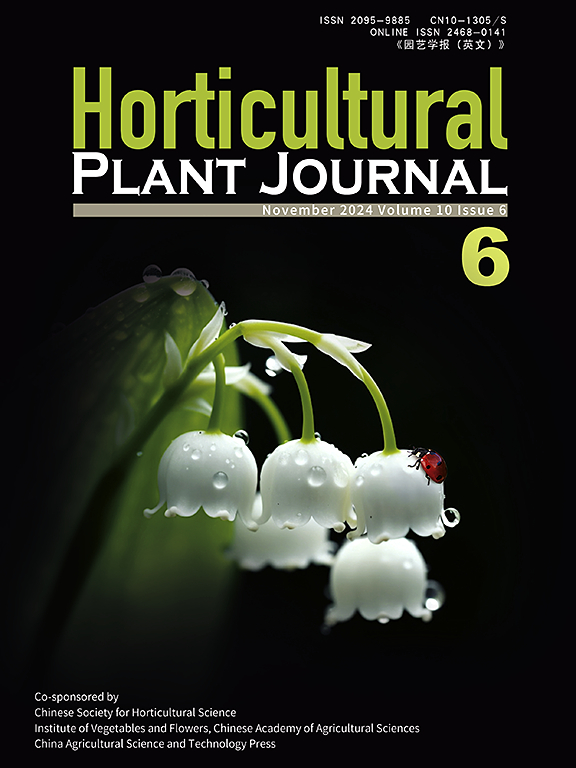Transcriptomic profiling of the floral fragrance biosynthesis of Iris germanica ‘Harvest of Memories’ and functional characterization of the IgTPS14 gene
IF 5.7
1区 农林科学
Q1 HORTICULTURE
引用次数: 0
Abstract
Iris (德国鸢尾花'Harvest of Memories'花香生物合成的转录组分析和 IgTPS14 基因的功能特征描述
鸢尾花(Iris germanica)是一种非常受欢迎的观赏植物,因其根部产生的珍贵香料鸢尾酮而闻名。许多鸢尾品种也能通过花朵释放香气。然而,鸢尾花香气的成分及其合成的分子机制尚未见报道。在这项研究中,我们通过顶空固相微萃取气相色谱-质谱法分析了德国鸢尾花'Harvest of Memories'在不同阶段和不同组织中的挥发性花香化合物。共鉴定出 36 种挥发性化合物,其中芳樟醇是主要成分。转录组分析表明,35 个差异表达基因和 218 个差异表达转录因子与芳樟醇的释放呈正相关。根据 qRT-qPCR 的结果,IgTPS14 基因的表达水平与芳樟醇的释放趋势一致,表明 IgTPS14 可能在芳樟醇的合成过程中发挥了一定的作用。系统进化分析表明,IgTPS14 蛋白属于 TPS-g 亚家族。对 IgTPS14 的体外酶学检测及其在烟草中的瞬时稳定过表达表明,该基因能产生芳樟醇。通过病毒诱导的基因沉默技术对花瓣中的 IgTPS14 进行瞬时沉默,发现其释放的芳樟醇显著减少。这些结果将有助于探索和揭示单萜合成的分子机制,为研究鸢尾香气的形成提供一定的参考。
本文章由计算机程序翻译,如有差异,请以英文原文为准。
求助全文
约1分钟内获得全文
求助全文
来源期刊

Horticultural Plant Journal
Environmental Science-Ecology
CiteScore
9.60
自引率
14.00%
发文量
293
审稿时长
33 weeks
期刊介绍:
Horticultural Plant Journal (HPJ) is an OPEN ACCESS international journal. HPJ publishes research related to all horticultural plants, including fruits, vegetables, ornamental plants, tea plants, and medicinal plants, etc. The journal covers all aspects of horticultural crop sciences, including germplasm resources, genetics and breeding, tillage and cultivation, physiology and biochemistry, ecology, genomics, biotechnology, plant protection, postharvest processing, etc. Article types include Original research papers, Reviews, and Short communications.
 求助内容:
求助内容: 应助结果提醒方式:
应助结果提醒方式:


